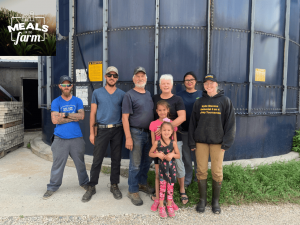
I remember when the Ontario Milk Marketing Board (OMMB) was created in August of 1965. It wasn’t a happy occasion for most milk shippers in Ontario. The OMMB encountered resistance among dairy producers who had strong relationships with local dairies or who were part of successful dairy co-operatives.
It was particularly hard for Eastern Ontario milk producers because milk quotas were set based on the previous year’s milk shipments. This area, particularly Renfrew County, had been in the grip of a serious drought for the past three years. Pastures dried up early, hay and corn crops were poor and hay had to be brought in from Southern Ontario.
My father had to sell some of his best heifers because his milk production was down the previous year. A few years later, when I entered the partnership, we bought quota and happily milked cows for many years.
But many small dairy farms milking 10 to 12 cows in Northern and Eastern Ontario feared additional quality regulations that required substantial financial investment, such as the purchase of bulk tanks and the construction of milk houses, which was impossible to do on the $4 hundredweight they had been getting. Thousands quit when the board came in.
I can recall most farmers shipping a little cream when I was a boy. The cows would be dried off before winter and they’d milk again when the cows freshened in the spring.
A low butterfat test was often a concern to farmers. I recall one farmer trying to solve his low butterfat test by buying a few Jersey cows and thinking that would certainly improve his Holstein butterfat test. It made no difference. So he asked the creamery owner why his test hadn’t gone up. The creamery owner said he should have told him he’d bought some Jerseys. That’s how farmers got ripped off.
Looking at some statistics from 1951, there were 244 creameries in Ontario with 60,272 cream producers. There were 356 cheese factories with 17,477 cheese milk producers.
By 1965 there were an estimated 30,000 milk shippers in Ontario shipping fluid, concentrated and cheese and an additional 28,000 cream shippers.
Bill Stewart, Ontario Minister of Agriculture from 1961 to 1975 and probably the best agriculture minister that Ontario ever had, was the driving force in creating The Ontario Milk Marketing Board. Everett Biggs, who was raised on a dairy farm at Pembroke, was the Ontario Deputy Minister of Agriculture and he also played a huge role in the creation of the milk board.
What I found unbelievable back in the 1970s was many dairy farmers did not want to convert from cans to a bulk tank. In 1973 there were still 5,569 producers in Ontario shipping milk in cans. There had been a steady conversion to bulk tanks. Many milk processors were impatient and had indicated specific dates after which they would refuse to accept milk in cans.
The board was reluctant to boot the farmers out and started applying pressure to get them to convert. The following year the differential between can and bulk shipments was increased from 10-cents to 18-cents a hundredweight. By the end of 1975, 3,500 producers were still shipping in cans. It would be another two years to end all marketing of milk in cans. Milk in cans came to an end on October 31, 1977.
It really is a wonder that the marketing board got off the ground as there was a lot of opposition to the idea of a board regulating milk from the farm, regulating transportation, processing and so on. The Jersey and Guernsey producers, known as The Channel Islands Breeds Milk Producers’ Association, was one such group who wanted to hold onto their turf and not be ruled by a new marketing board. They wanted to market their milk separately as they had done successfully for many years.
I chuckle when I think of the time I stopped at the Jersey Breeds booth at the Ottawa Valley Farm Show and asked the two young women sitting at the booth if they’d heard of The Channel Islands Breeds Milk Producers’ Association. They looked at each other and shook their heads. I thought if people were promoting a breed of cattle at a big farm show they’d be knowledgeable about the breed they were representing.
I explained that the Jersey breed was developed on Jersey Island, one of a series of small Channel Islands in the channel between England and France, just off the coast of Normandy, France. The Guernsey breed originated on Guernsey Island, also in the Channel. And so the Jersey and Guernsey dairy farmers in Ontario took the name for their association as the Channel Island Breeds Milk Producers. And, I pointed out, they wanted to stay on their own and market their milk, not through a newly formed board. They caused a lot of headaches for Stewart and Biggs and others trying to form a milk board in Ontario.
“Did you have Jerseys?” asked one of the women probably wondering why I was so familiar with the breed. “No, I just had Holsteins!”
Maynard van der Galien is a Renfrew-area farmer and a long-time columnist with Farmers Forum.

























